Give China’s Gen Z what they want: remake the system for green fashion
Promoting the practice of creating something new out of the old, fashion remake companies and designers use wasted or unused items as the starting point of their sustainable business. By collecting, saving and reusing textiles, materials and garments destined for incineration or landfill, they are the real pro players for upcycling. But what is the current status of this conscious fashion in China? While the country’s slow fashion brands are on the rise, remake talents are making a name for themselves. Want to know more? We’ve got you covered.
How I came into contact with remakes?
As a styling major, my first introduction to the concept of remakes came from observing South Korean girl groups and their stage performances. The way their stylists transformed costumes always left a lasting impression on me, and I’ve been learning how to make my own creations stand out similarly. Since I was young, I’ve been experimenting with deconstruction and combining small accessories. However, it wasn’t until the end of 2022 that I started applying the concept to myself by purchasing, wearing, and understanding remake products and brands. Unlike most peers who only appreciate remake products, I actively incorporate them into my style.
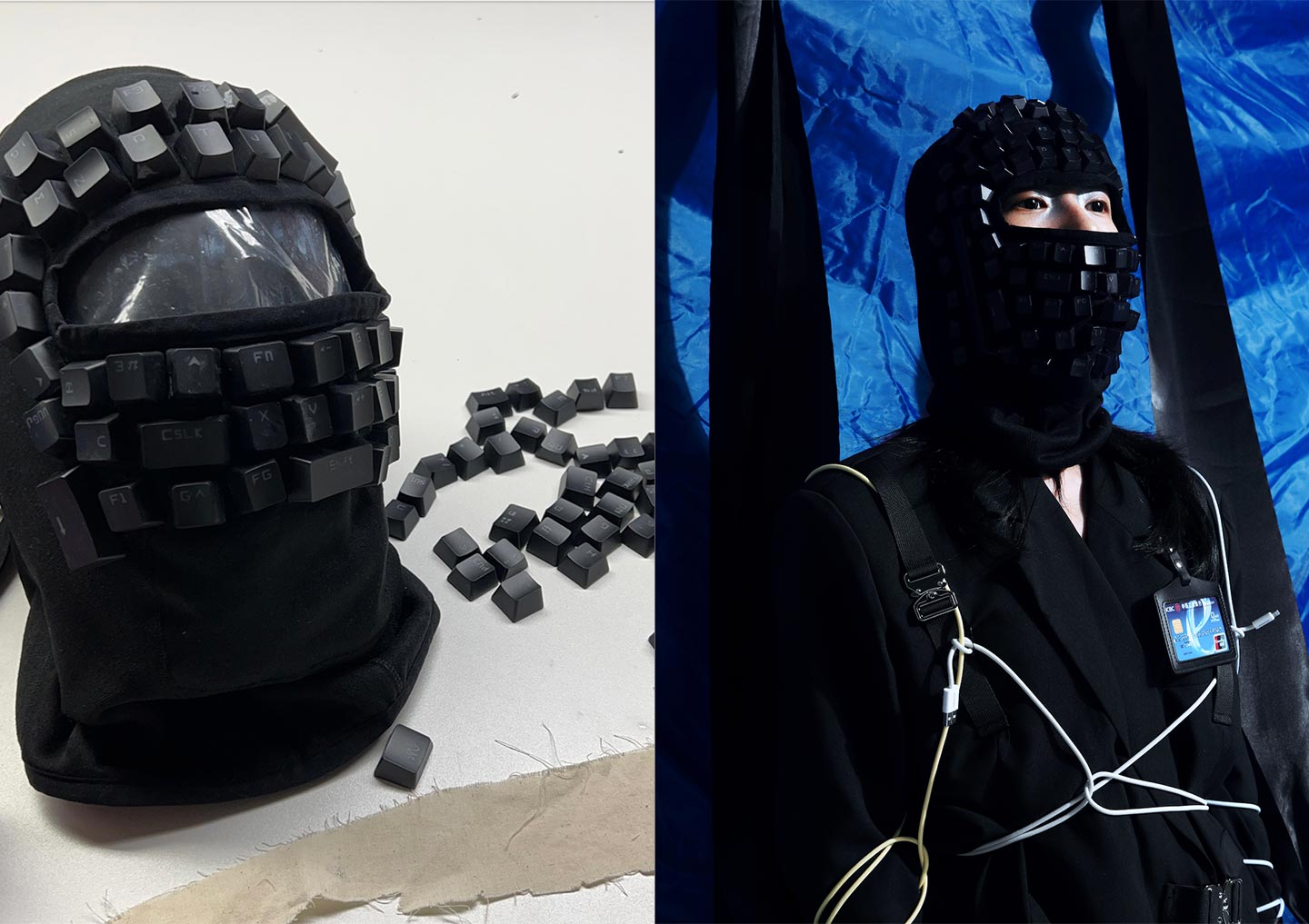
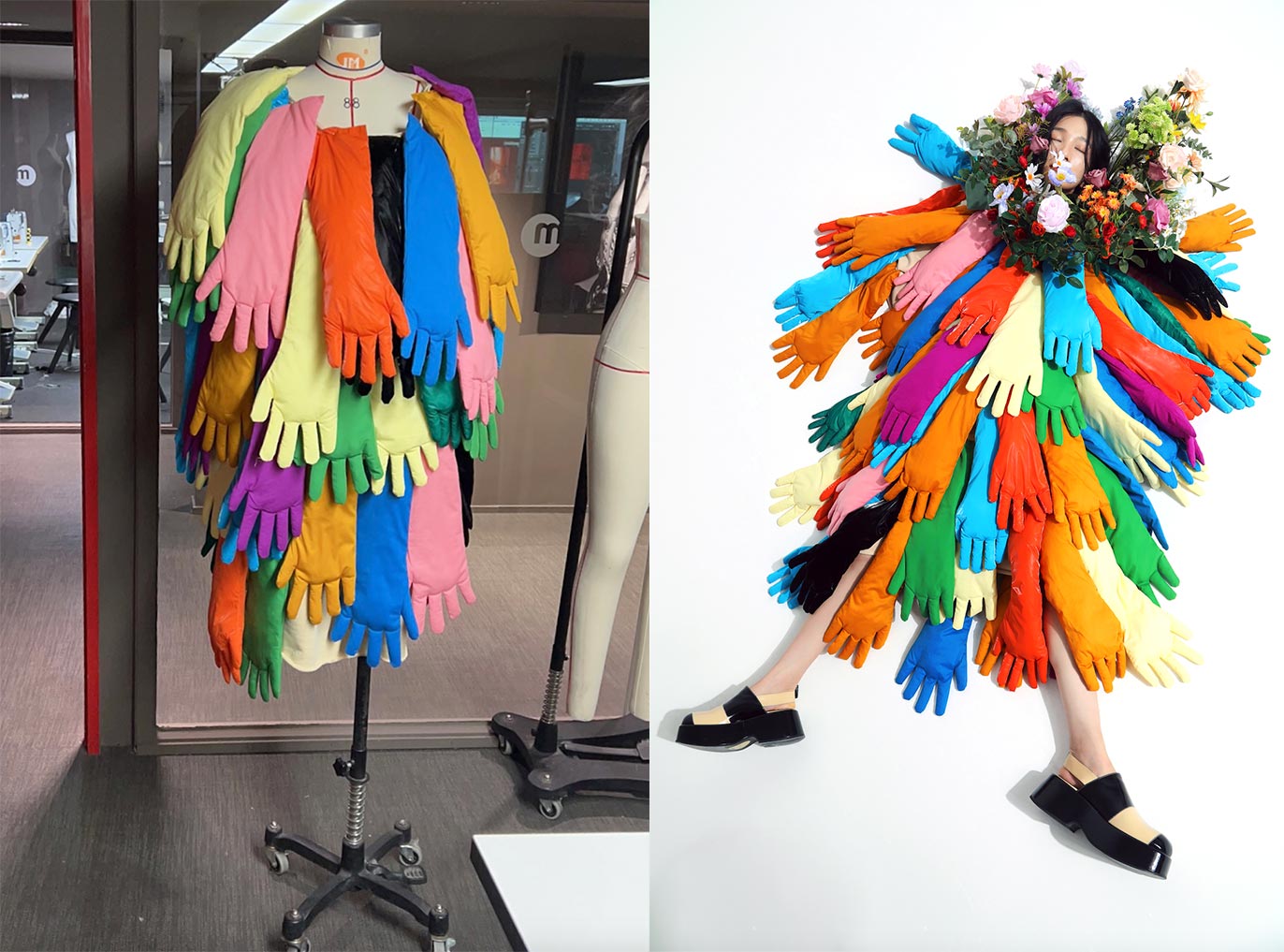
When I started to experiment with some simple remake
How can a remake gain visibility among the public?
Little Red Book has played a pivotal role in promoting the concept of Remake. In 2022, “Circular Fashion” claimed the top spot among Xiaohongshu’s trending topics, while “My Remake Diary” garnered an impressive 91 million reads, and “Vintage” reached 57 million reads. The surge in traffic has provided tremendous support, leading to the flourishing of both established remake brands and individual remakers, akin to mushrooms thriving after rain. As a result, product prices have also experienced a rapid increase.
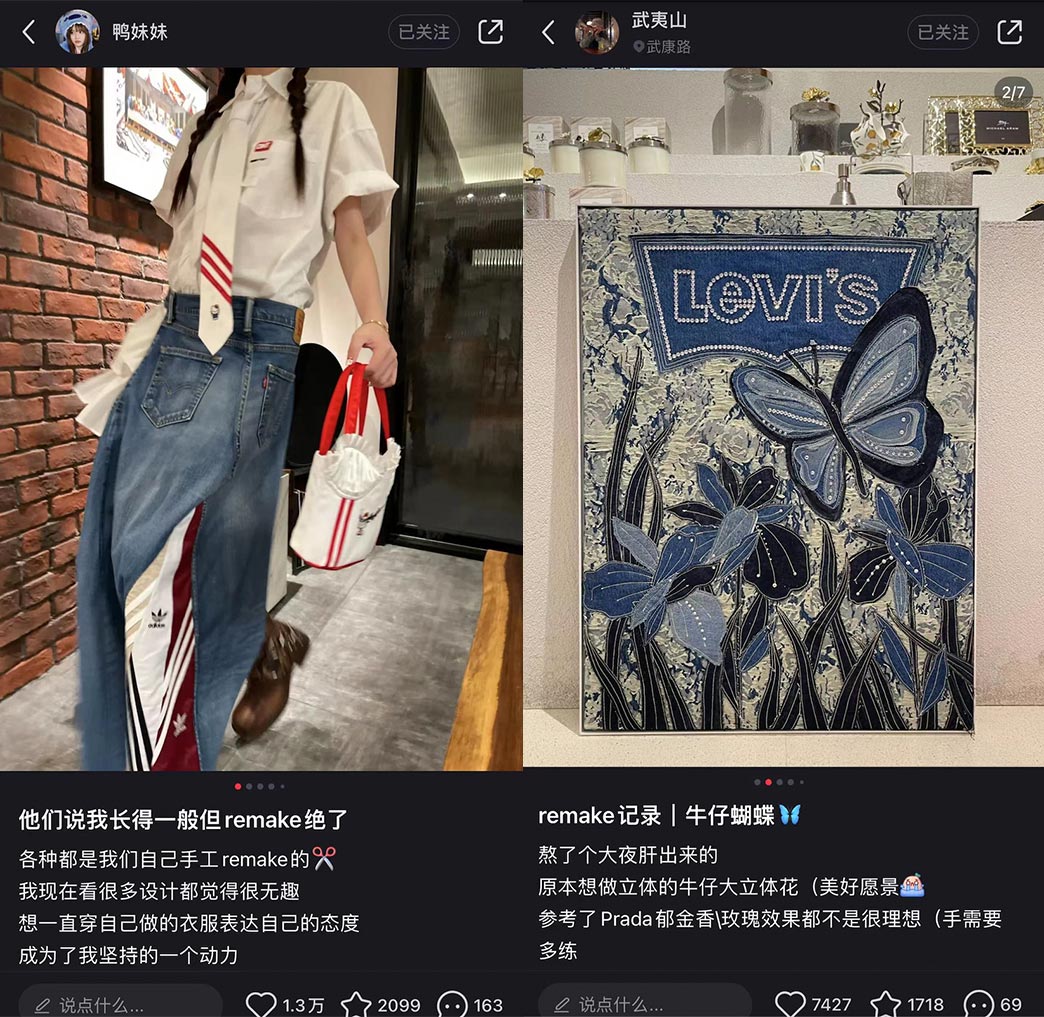
Highly liked remake-related posts on Little Red Book
Handmade products, such as remake ones, have quickly gained widespread attention in only six months, partially due to the emergence of diverse markets. Weekend markets, in particular, have become a regular activity for urban dwellers, providing ample opportunities for remakers to connect with diverse communities and showcase their creations. This increased visibility has enabled remake artisans to tap into new windows of opportunity, fostering greater engagement with their target audience.
Similar to NEED, a second-hand platform that has expanded from an online presence to organising offline markets in multiple cities, the growing popularity of second-hand goods among the younger generation is evident. Recently, a pop-up market held in Shenzhen had to end prematurely due to overcrowding, underscoring the increasing demand and support for sustainable shopping options. This shift towards offline markets highlights the strong traction that second-hand products have gained in recent times, particularly among younger consumers who are actively embracing sustainable consumption practices.
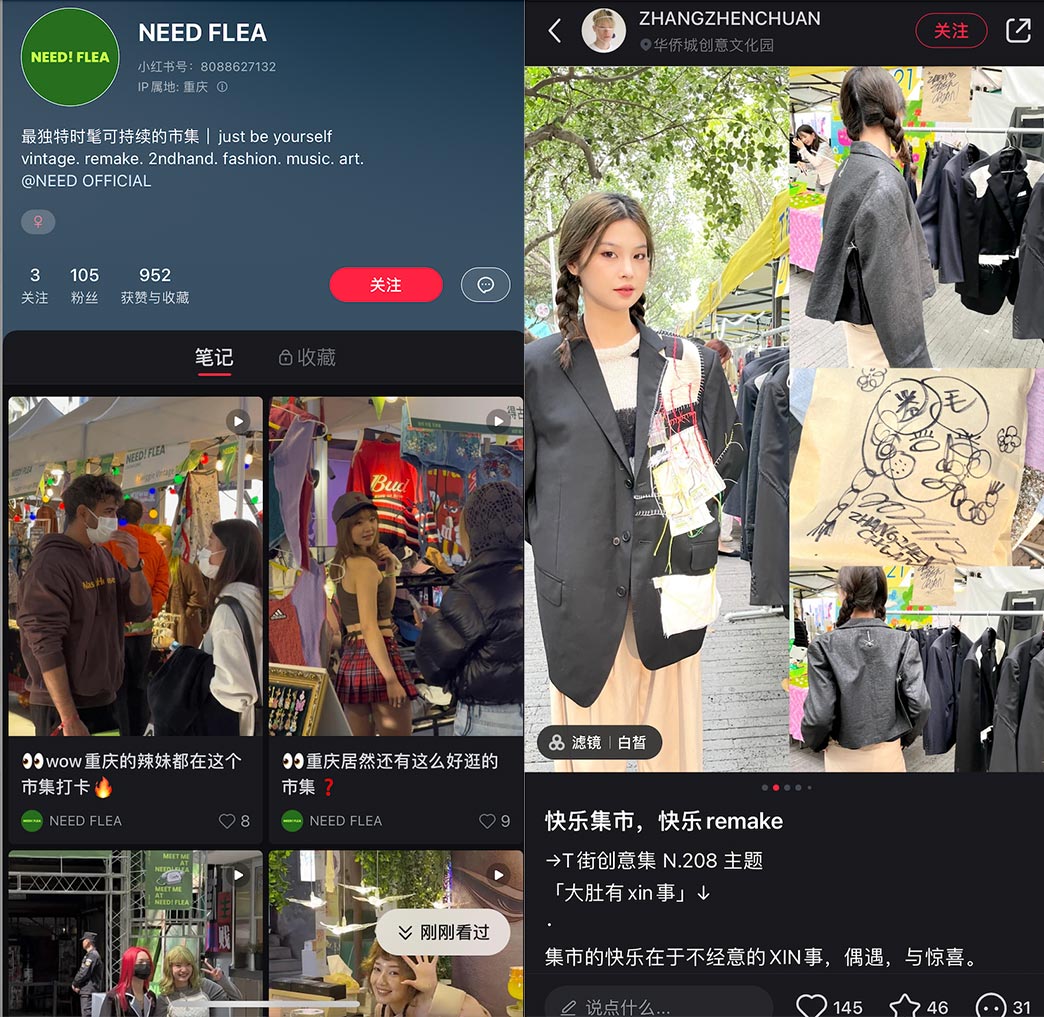
The NEED market, increasingly popular among young people (via Little Red Book)
It’s easy to understand why remake products are highly sought after and loved. These creations are the result of remakers transforming existing products according to their own vision, making them inherently niche and unique. These works often encompass diverse takes on various objects, imbuing them with the remaker’s personality and attitude, which adds a refreshing twist to the original brand. This unique effect often sets them apart from mainstream market offerings. Such product characteristics resonate with Generation Z’s innovative and distinctive nature, and many of the founders of emerging remake brands in China were born in the 1990s. For instance, the Shanghai-based denim brand NUTH collaborated with young artist XUE on a collection named “CHAOS PROJECT” at TX Huaihai, featuring nine pairs of pants remade by XUE. Each pair was one-of-a-kind and sold out swiftly upon their release.
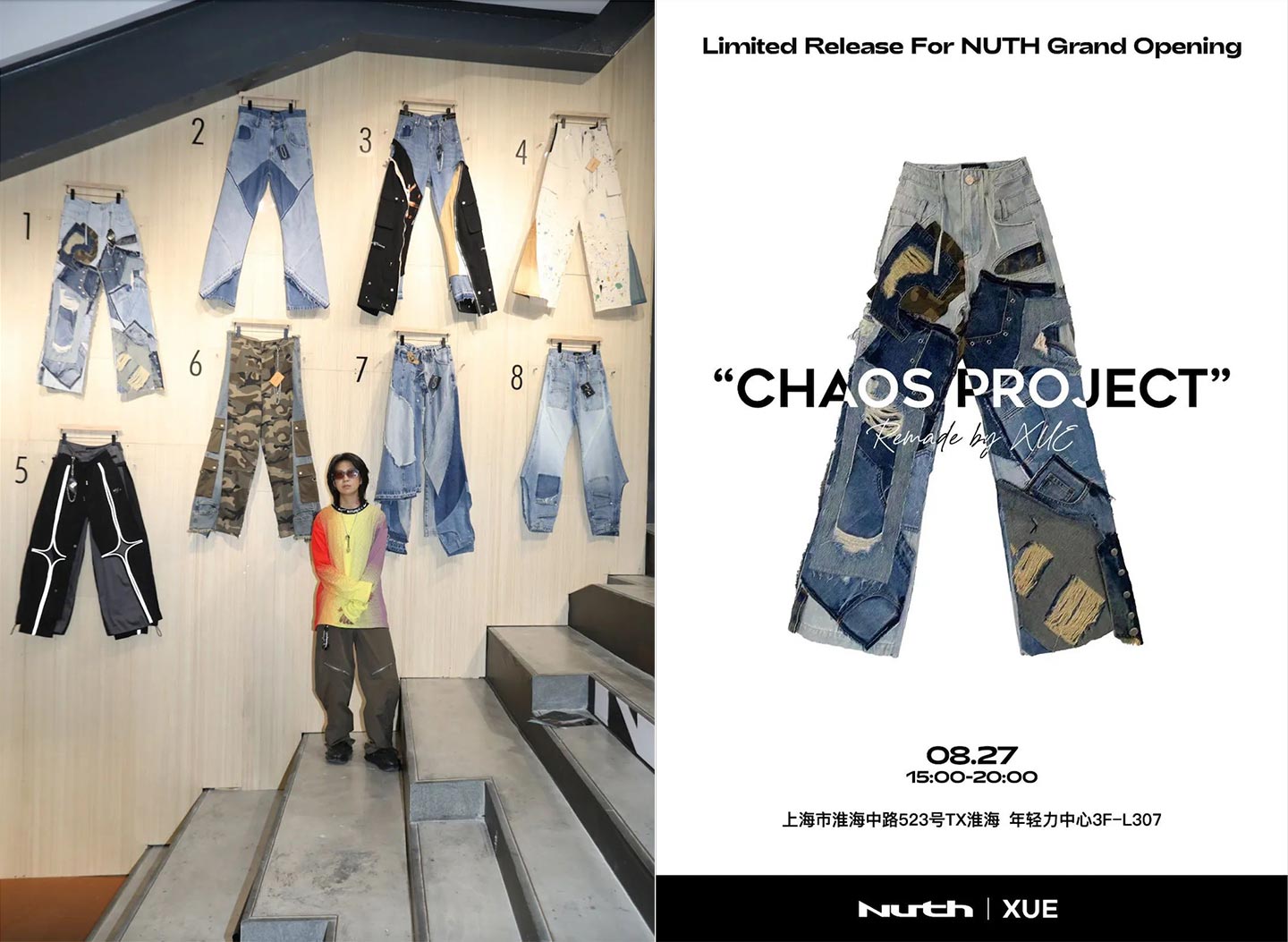
The Shanghai-based denim brand NUTH collaborated with young artist XUE on a collection named "CHAOS PROJECT" at TX Huaihai
In the hands of skilled remakers, products are transformed into captivating works of art, exemplifying the innovation and individuality of the new generation in their creations. These products often come with a sense of storytelling and reflect the spirit of the times, setting them apart from mass-produced items churned out on assembly lines. Yet despite the creativity and uniqueness of remade products, that alone may not suffice in a highly competitive market landscape.
Will remake go further in China?
Exquisite craftsmanship may not be the sole determining factor in the remake world. As long as one dares to imagine and create, unique and original works can come to life. Creating impressive pieces is undoubtedly a gratifying endeavour for remake brand founders. However, with the rapid proliferation of media platforms, plagiarism often occurs at an alarming pace, with mass-produced replicas sold at rock-bottom prices on other shopping websites. This poses significant challenges and impacts on the creative journey of individual remakers while causing infringement and inflicting a commercial blow on remake brands.
The cost of remake products is often high, as it covers innovative design, manual craftsmanship, and raw materials, among other factors. The inability to mass-produce is a crucial hindrance to cost reduction. For those unfamiliar with remake culture, the higher prices may discourage consumers from exploring or prompt them to opt for replica products from other manufacturers.
From a branding perspective, relying solely on customised products may not be sufficient to expand their business. Establishing remake products as branded items is a critical consideration for remake brand founders.
In my opinion, remake has gradually gained acceptance among young people, transitioning from a preference for remaking to promoting the related culture and selling Remake products, marking the first step in opening up the Chinese market. With Generation Z being the most supportive demographic for remake, brands may need to provide more reasons to sustain their support. The experience and storytelling associated with products are crucial factors. Generation Z is highly attuned to brand declarations and deeply concerned about brand culture. Therefore, it is imperative for remake brand founders to effectively narrate and promote remake culture without compromising its essence.

